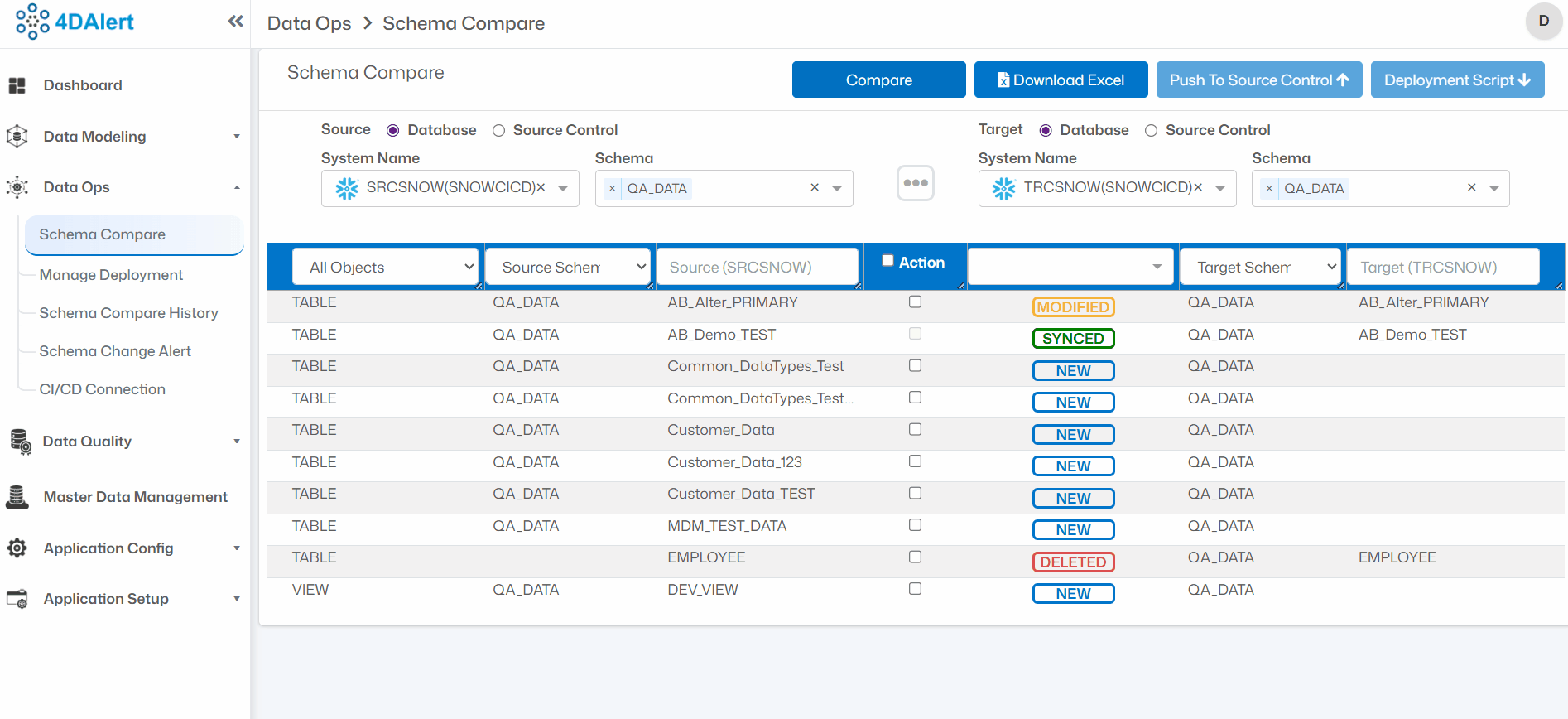CI/CD Pipeline Automation & Integration Services

CI/CD Integration with 4DAlert
CI/CD integration enhances your development pipeline by automating key stages, enabling faster and more reliable deployments. With 4DAlert, you can automate schema comparisons, seamlessly deploy changes, and ensure consistency across development, staging, and production environments. By embedding sophisticated automation and advanced intelligence into your CI/CD processes, 4DAlert minimizes manual intervention, reduces human errors, and accelerates deployment cycles. This streamlining of your workflow enables you to maintain high-quality standards while increasing delivery velocity and operational reliability.
Key Features
Automate schema diff
×Retrieve Object Comparison List to Identify Schema Differences This step involves retrieving the object comparison list, which helps in identifying schema differences between versions, aiding in the deployment process.
Git/devop integration
+Push DDL Changes to Source Control In this step, the changes made to the Data Definition Language (DDL) are pushed to source control, ensuring that all modifications are properly tracked and versioned.
Deployment Script
+Generate DDL for Schema Deployment Execute Data Definition Language (DDL) to Apply Schema Changes.
Deploy DB Changes
+Execute Data Definition Language (DDL) to Apply Schema Changes The final step involves executing the generated DDL to apply the necessary schema changes, completing the automated pipeline process.

Value And Outcomes
⦿ Faster, Safer Deployments
Automates key steps in the release process to speed up database changes while reducing manual work and delays.
⦿ Consistent Across Environments
Keeps development, testing, and production systems perfectly aligned, avoiding costly version mismatches.
⦿ Lower Risk of Errors
Built-in checks help catch potential issues early, protecting business operations during updates.
⦿ Clear View of Change Impact
Provides easy-to-understand insights on how updates affect systems, enabling confident decisions before rollout.
-
Automated Change Deployment
-
Version Synchronization
-
Error Mitigation
-
Impact Analysis
-
Developer Efficiency
Ready to Work, Let's Chat
Explore how 4DAlert leverages AI-ML to implement intelligent schema comparison, automate change deployments, and drive comprehensive DataOps CI/CD practices tailored for the most complex enterprise data environments.
